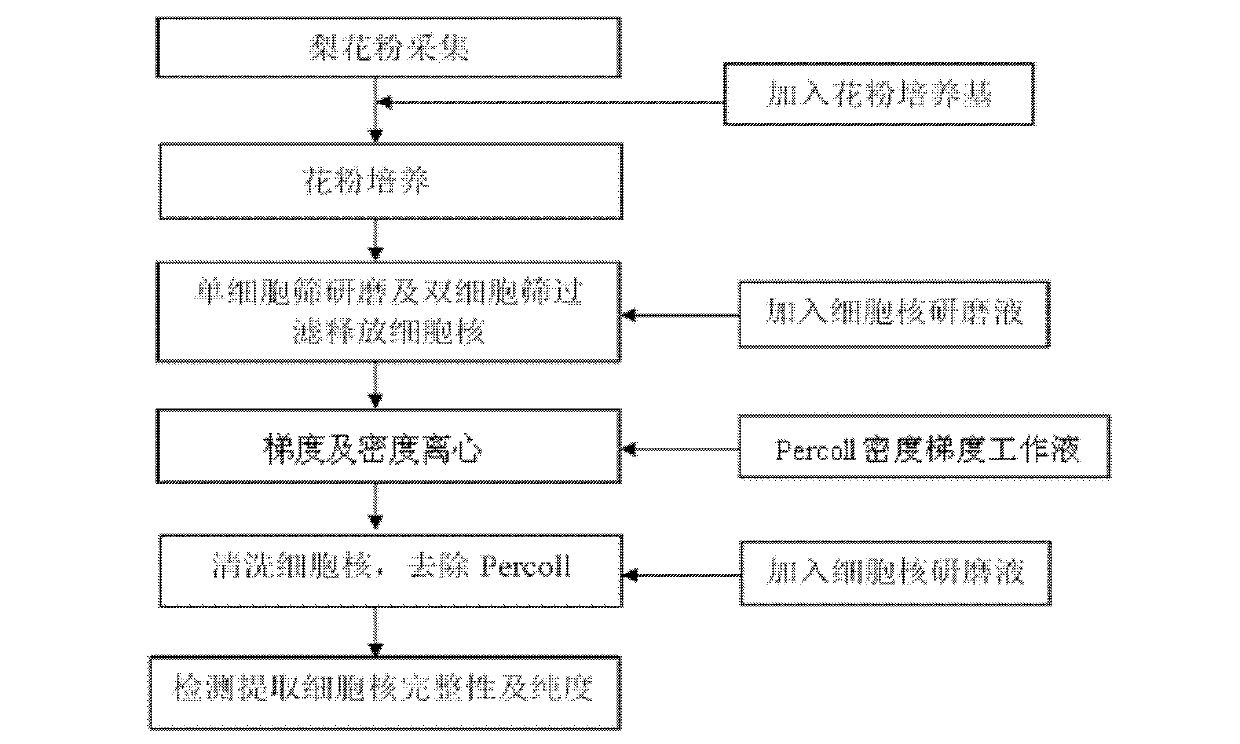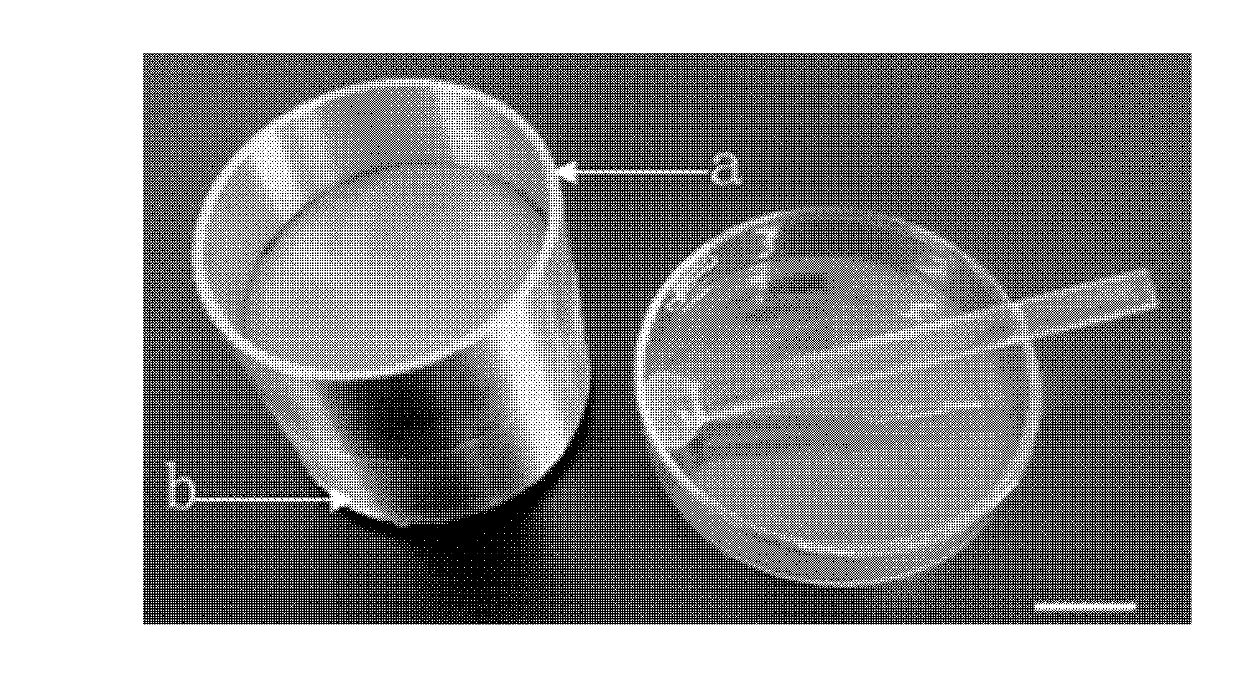Method for extracting nucleuses of pear pollen tube
A cell nucleus and pollen tube technology, applied in the field of plant biochemistry, can solve the problems of high cost, difficulty in breaking the pollen tube wall, complicated steps, etc., and achieve the effects of low cost, saving plant materials, and easy operation
- Summary
- Abstract
- Description
- Claims
- Application Information
AI Technical Summary
Problems solved by technology
Method used
Image
Examples
Embodiment Construction
[0034] 1) Collecting pollen: collect the anthers at the big bud stage, and dry them by irradiating with incandescent lamps.
[0035] 2) Pollen culture: separate pollen from dried anthers, take 50mg of pollen, add it to 50ml of pollen culture medium, and cultivate for 3 to 4 hours at 25-28°C, 140-180rpm under dark conditions; formula of pollen culture medium : 100g / L sucrose, 0.3g / LCa (NO 3 ) 2 4H 2O, 30mM MES (α-sodium sulfomethyl ester sulfonate), 150g / L PEG 4000 (polyethylene glycol 4000), 0.1g / L boric acid was dissolved in distilled water and fixed to volume, adjusted to pH 5.8 with Tris base ~6.5.
[0036] 3) Release of cell nuclei: Pour the cultured pollen and culture medium into cell sieve a with a pore size of 50 μm, and let the medium flow out through the cell sieve, quickly add a cell sieve b with a pore size of 40 μm at the bottom of cell sieve a, Place the two cell sieves on a petri dish slightly larger than the diameter, quickly add the cell nucleus grinding so...
PUM
| Property | Measurement | Unit |
|---|---|---|
| pore size | aaaaa | aaaaa |
Abstract
Description
Claims
Application Information
 Login to View More
Login to View More - R&D
- Intellectual Property
- Life Sciences
- Materials
- Tech Scout
- Unparalleled Data Quality
- Higher Quality Content
- 60% Fewer Hallucinations
Browse by: Latest US Patents, China's latest patents, Technical Efficacy Thesaurus, Application Domain, Technology Topic, Popular Technical Reports.
© 2025 PatSnap. All rights reserved.Legal|Privacy policy|Modern Slavery Act Transparency Statement|Sitemap|About US| Contact US: help@patsnap.com



